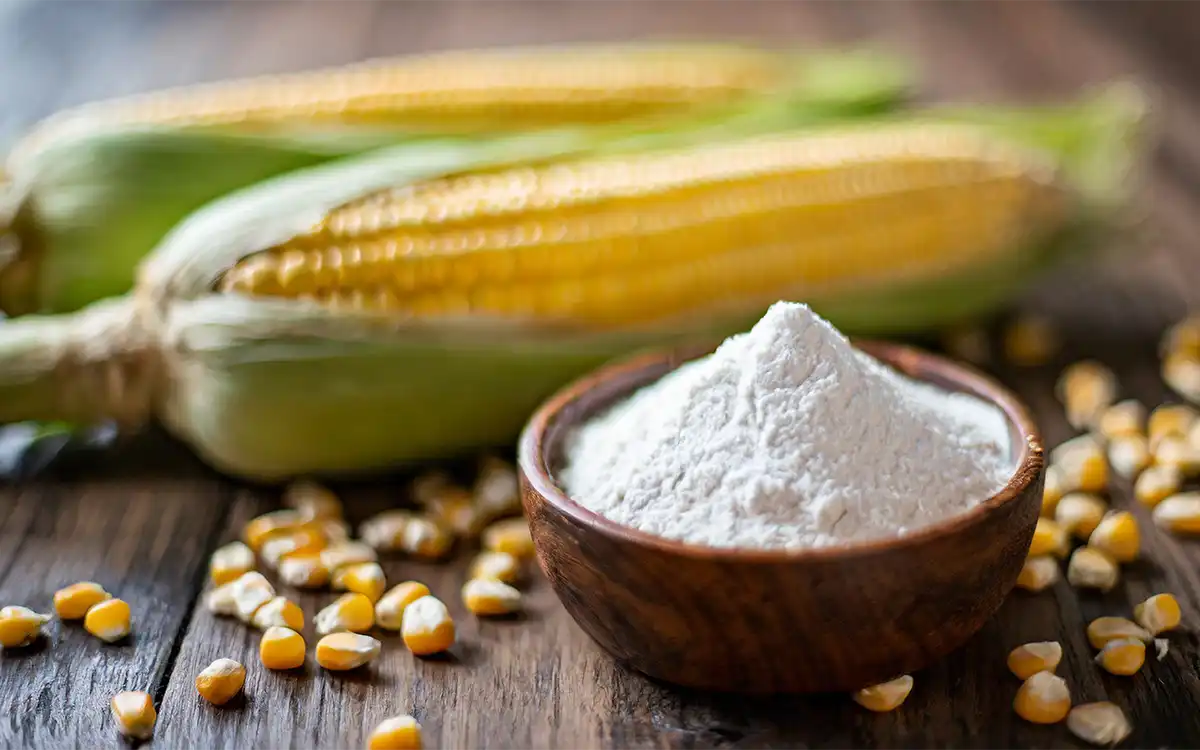Is Cornstarch Gluten Free?
Cornstarch is a common ingredient in many packaged and prepared foods. Knowing if cornstarch is gluten free is key to ensuring you remain healthy and comfortable. This article will explore what cornstarch is, how it is made, whether it is gluten free, and what alternatives to cornstarch you can use yourself in cooking and baking.
What is Cornstarch?
Cornstarch is a fine white powder derived from corn. Cornstarch is made by removing the hard outer shell on corn kernels to reveal the white starchy endosperm. This refined part of the grain is then ground up to create cornstarch. It is also sometimes referred to as corn flour.
Cornstarch is most often used as a thickening agent in foods like sauces and soups. It is also used as a batter or coating on foods like meats and vegetables.
Is Cornstarch Gluten Free?
Corn is largely considered to be a “gluten free” grain. However,
I’ve shared previously that this is not the case. So, is cornstarch gluten free? Well, corn contains a type of gluten called zein.
Research has shown that this gluten protein is similar in sequence and structure to the gluten proteins found in wheat and other grains. Just as wheat flour contains the gluten proteins of wheat, cornstarch still contains the zein gluten protein. For this reason, cornstarch is not gluten free. In addition, research shows that many with celiac and gluten sensitivity react to corn just as severely as wheat, barley, and rye.
This is largely due to the fact that zein is so similar to the gluten proteins found in wheat.
Even without the zein gluten protein, corn and cornstarch are often
cross-contaminated with wheat and other grains, because many manufacturers of cornstarch also process foods that contain gluten.
Additionally, corn itself can be easily cross-contaminated in the fields and on the farms where it is grown.
Cornstarch Brands That Claim To Be Gluten Free
While corn contains the gluten protein, zein, there are still brands that market their cornstarch as “Gluten Free.” Here are some of the brands to look out for that are claiming to be gluten free despite the gluten content that exists in corn and cornstarch:
Hodgson Mill
Hodgson Mill is a popular brand that produces many different gluten free baking ingredients. Hodgson Mill’s cornstarch is certified Gluten Free by the Celiac Support Association which requires products to contain less than 5 parts per million of gluten. Despite the fact that corn naturally contains gluten, Hodgson Mill has created a cornstarch that is neither cross-contaminated with gluten, nor does it have a high enough gluten content to be considered harmful by the Celiac Support Association.
Argo and Kinsford’s
Argo and Kinsford’s produces cornstarch that is free of cross-contamination with gluten. According to the company’s FAQ page, their cornstarch is gluten free, but it is not tested or certified by any third-party groups, so it should be assumed that, because corn does in fact contain gluten, Argo and Kinsford’s cornstarch is not truly gluten free.
Bob’s Red Mill
Bob’s Red Mill is another popular gluten free brand that produces multiple different gluten free baking ingredients. Cornstarch from Bob’s Red Mill is processed with separate machinery so it is free from cross-contamination with gluten and it is tested to ensure that it contains less than 20 parts per million of gluten. However, once again, corn does contain the gluten, zein, so Bob’s Red Mill cornstarch has a small amount of gluten, and is not gluten free.
Cornstarch Alternatives
Those with celiac disease or gluten sensitivity should avoid corn and cornstarch. Be wary of many of the
hidden sources of corn-based ingredients when purchasing packaged foods and eating food that you haven’t prepared yourself.
Here are some alternatives to cornstarch that you can try in your cooking and baking:
-
Arrowroot Flour
- Arrowroot is a starch obtained from the rhizomes of several tropical plants, most commonly Maranta arundinacea, which is native to Indonesia.
- Use twice as much arrowroot as cornstarch.
-
Flaxseed Gel
- Flaxseed gel can be made by mixing ground flax seeds with water to create a gelatinous substitute that can work to thicken foods similarly to cornstarch.
- Mix 1 tablespoon of flaxseed with 4 tablespoons of water to replace roughly 2 tablespoons of cornstarch. Let the mixture sit for five minutes to thicken prior to using.
-
Tapioca Starch or Cassava Flour
- Both are extracted from the storage roots of the cassava plant, but are slightly different. Tapioca starch is just the extracted starch, while cassava flour is made from the entire root. Cassava flour has more fiber than tapioca starch.
- Use twice as much tapioca starch and cassava as cornstarch.
-
Water Chestnut Starch
- A very popular thickening agent used in many Asian cuisines, it is made from the root vegetable water chestnut.
- Use a 1:1 ratio to cornstarch.
The Bottom Line
So, is cornstarch gluten free? Though labeled as such, cornstarch contains the gluten protein,
zein, which causes those with celiac disease or gluten sensitivity to react negatively. Additionally, cross-contamination of cornstarch with other grains makes it even more likely to cause a gluten reaction.
Because of this, it is best to avoid cornstarch and foods that contain it. Instead, try out one of the gluten- and grain-free alternatives the next time one of your recipes calls for cornstarch.

